How Fine Lines & Wrinkles Can Be Addressed
Are you curious about the different approaches people use to manage fine lines and wrinkles? This blog provides an overview of common options, along with general considerations and potential effects.
What approaches are available for managing fine lines and wrinkles?
Some medical approaches that are now used to address fine lines and wrinkles were originally developed for other health conditions, such as certain muscle disorders. Observations over time suggested that these treatments could also influence the appearance of the skin, which led to further exploration in aesthetic settings.
Some approaches used to address fine lines and wrinkles have origins in treatments initially developed from bacterial research. These treatments can affect muscle activity, which may influence the appearance of skin over time. Observations in aesthetic settings have highlighted these effects, but individual results can vary.
Certain medical approaches used in aesthetic settings can influence how facial muscles move, which may affect the appearance of lines that form during expressions or those that are present at rest. Individual experiences and outcomes can vary.
What are the different ways people address expression lines?
Various approaches are explored to address fine lines and expression lines for both aesthetic and medical reasons, including the following:
- Aesthetic considerations
- Address lines that form in the upper face
- Influence the appearance of lines present at rest
- Affect eyebrow position and facial expression
- Modify certain aspects of the smile or jawline appearance
- Influence the appearance of neck muscles
- Manage conditions related to excessive sweating
Medical considerations
- Support management of migraine or tension-type headaches
- Assist with certain muscle spasms or stiffness
- Provide options for eye alignment issues or involuntary blinking
- Help with jaw tension or teeth grinding
How can different approaches affect dynamic and static lines?
Approaches used to address dynamic and static lines are increasingly explored for their potential effects on the appearance of the skin. These approaches may influence the appearance of lines, though individual experiences can vary and results are not guaranteed.
Potential effects of approaches for dynamic and static lines may include
- May influence the appearance of fine lines and wrinkles
- Can affect aspects of facial expression and skin texture
- Supports subtle aesthetic changes without surgical procedures
- Typically requires minimal disruption to daily activities
- Non-invasive in nature
What to know about approaches for fine lines and wrinkles
- Information about approaches for fine lines and wrinkles often includes consultation with a qualified healthcare professional to discuss medical history and suitability.
Potential considerations or risks associated with these approaches may include:
- Pregnant or breastfeeding women
- Neurological issues like myasthenia gravis and Keloid scarring
- Certain allergies and medications
- Your doctor will issue a consent form that includes the scope of the treatment, aftercare, and possible side effects so you can decide if it is appropriate for you.
- If your aesthetician deems you suitable for the procedure, he will discuss your desired results and their feasibility.
- Your cosmetic surgeon will develop a treatment plan to help you achieve your aesthetic goals. Upper face procedures involve facial expressions that reveal the target muscles and injection spots.
- Your doctor will proceed with the clinical treatment for wrinkles, which takes several minutes.
- Your physician will provide aftercare tips to help you achieve the best possible outcome.
What happens after clinical treatments for fine lines?
After using methods for fine lines and wrinkles, it’s common to notice minor effects such as gentle swelling, mild bruising, or temporary redness. Having a conversation with a qualified healthcare professional can help you understand what to expect and how to look after your skin.
- Avoiding activities that put extra strain on facial muscles
- Being gentle around the treated area
- Considering guidance from a healthcare professional about post-treatment care
- Discussing lifestyle factors, such as alcohol or exercise, with a qualified professional
- Following professional advice regarding skincare or makeup after treatment
- Being mindful of sleeping positions that may affect the area
Some methods for addressing fine lines and wrinkles may show noticeable effects over time, though the timing and duration can vary between individuals. It’s important to discuss ongoing options and what to expect with a qualified healthcare professional.
Maintaining a consistent skincare routine and protecting your skin from the sun can support overall skin health. Ultraviolet (UV) exposure is a major factor in skin ageing, and using a broad-spectrum sunscreen may help reduce the appearance of fine lines over time.
A helpful consideration: if you’re planning to explore methods for fine lines and wrinkles before a special event, it’s a good idea to allow enough time to discuss options and observe any changes. Timing can vary between individuals, so consulting with a qualified healthcare professional can help you plan ahead.
When to consider exploring methods for fine lines and wrinkles
While there are no set rules about when to explore methods for fine lines and wrinkles, some people choose to start early as a way to support the appearance of their skin over time. Discussing options with a qualified healthcare professional can help determine what might suit you best.
Signs of ageing in the upper face often begin to appear in the late 20s or early 30s, though the timing can vary depending on factors like skin type and lifestyle. Collagen, a key protein in connective tissues, naturally decreases with age, which can influence the skin’s structure over time.
Around this age, people may start to notice signs of ageing, such as crow’s feet and fine lines. Some choose to explore methods for addressing these changes in consultation with a qualified healthcare professional. Combining these approaches with a consistent skincare routine may help support the overall appearance of the skin over time, though individual experiences can vary.
If fine lines and wrinkles are already present, people may explore various methods to address them. Talking with a qualified healthcare professional can help you understand the options available and how they might support the appearance of your skin over time.
What to know about the safety of methods for expression lines
Methods for addressing expression lines are widely used, but experiences can vary between individuals. Some people may notice side effects, which can include:
- Minor bruising or swelling
- Changes in eyebrow position
- Rarely, temporary drooping of the eyelids
Most side effects tend to be mild and temporary, often settling over time. Speaking with a qualified healthcare professional can help you understand potential effects and what to expect.
How might methods for wrinkles affect facial expression?
Methods used for wrinkles are designed to support natural facial movement. While individual experiences can vary, many people find that these approaches allow the skin to retain a natural appearance.
Who might consider methods for dynamic and static lines?
Many adults aged 18 and over may explore methods for dynamic and static lines. Some people choose to start in their mid-to-late 20s, though the timing can vary depending on individual skin and lifestyle factors.
Certain individuals may need to exercise caution or discuss alternatives with a qualified healthcare professional, including those with:
- People with known allergies related to relevant medical products
- Those with certain muscle or nerve conditions
- Pregnant or breastfeeding individuals
- People with active skin infections or other skin conditions in the treatment area
Methods for addressing dynamic and static lines are explored by both men and women. In recent years, more men have shown interest in these approaches as a way to support the appearance of their skin over time.
How long might procedures for fine lines and wrinkles last?
How long procedures for fine lines and wrinkles last can vary depending on several factors:
- The area of the face or muscles being addressed
- How an individual’s body responds to the procedure
- Muscle activity and strength
- Lifestyle factors, such as sleep, stress, and skincare habits
The duration of effects from procedures for fine lines and wrinkles can vary between individuals. While some people may choose to undergo treatments several times a year, outcomes and timing can differ. Seeing the same qualified healthcare professional for follow-up sessions can provide continuity, as they become familiar with your facial features and individual needs.
Tip: While procedures for fine lines may support the appearance of your skin, protecting your skin from the sun is also important. Using a broad-spectrum sunscreen, wearing a hat, and wearing sunglasses can help reduce squinting and repetitive facial movements, which contribute to the formation of frown lines and crow’s feet over time.
Incorporating a retinoid product into your regular skincare routine may support overall skin health and complement other approaches for fine lines and wrinkles.
What to know about discomfort with procedures for wrinkles
Procedures for wrinkles are generally well-tolerated, though some people may feel mild discomfort during the process. Experiences can vary, and the duration of the procedure may differ depending on individual factors.
Some procedures for wrinkles may cause mild discomfort, and numbing may not always be necessary. If you are concerned about this, discussing options with a qualified healthcare professional can help you feel more comfortable.
Common methods for addressing wrinkles
Common procedures for fine lines and wrinkles may be considered by people looking to support the appearance of their skin. When combined with a consistent skincare routine, these approaches can contribute to the overall health and appearance of the skin over time, though individual results can vary.
Procedures for fine lines are usually well-tolerated, and experiences can vary between individuals. The timing of follow-up sessions may differ depending on personal factors, so it’s best to discuss a suitable plan with a qualified healthcare professional.
Flawless Aesthetics provides information about methods for fine lines and wrinkles. For general inquiries or guidance, you can contact the clinic during business hours, and staff can provide educational support and answer questions.

